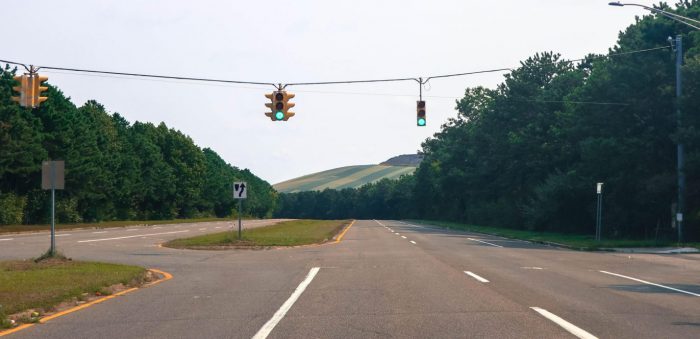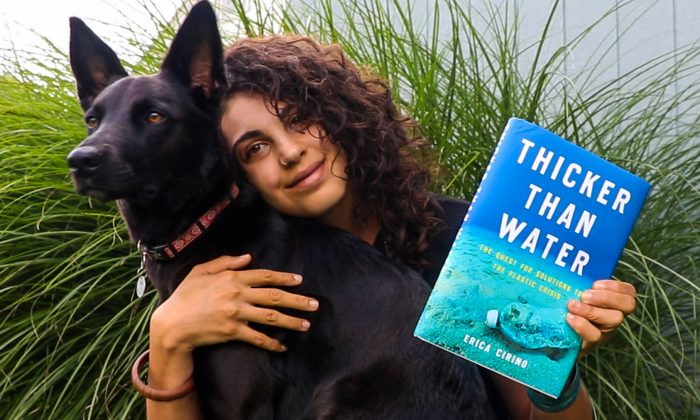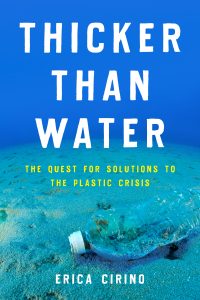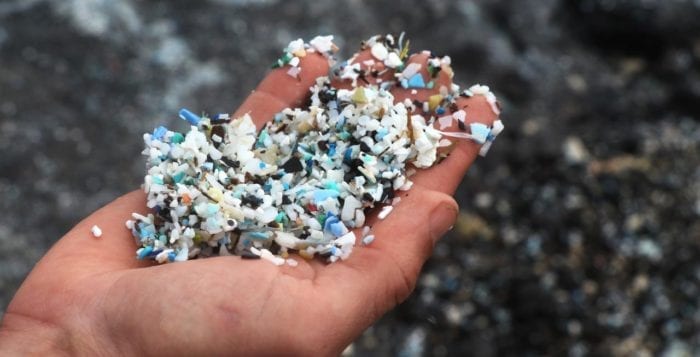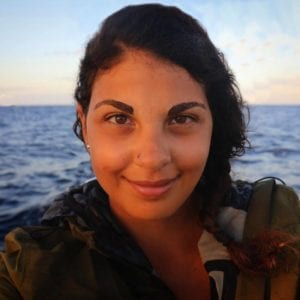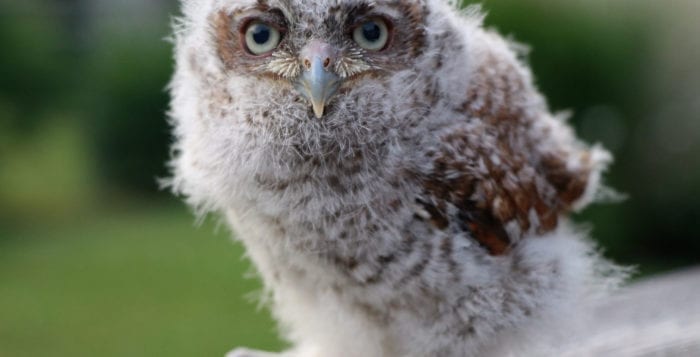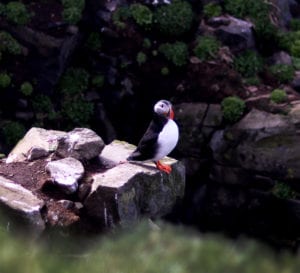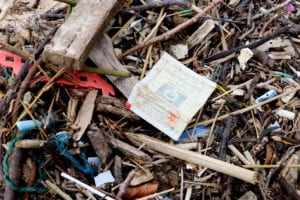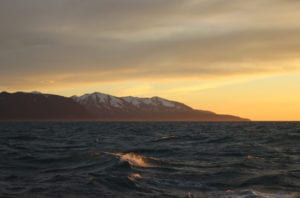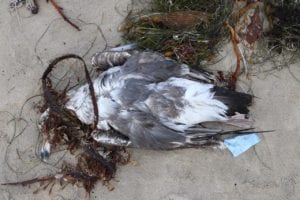By Erica Cirino
One recent morning, I drove my trash and recycling to my local waste transfer station in Connecticut. I had a single bag of garbage to dispose of, a large bin of recycling, and a few thick chunks of treated lumber leftover from the weekend’s project: building a set of wooden stairs up to my front door.
First, I dumped the recycling down one of two wide rusty metal trash chutes—clang, clang, clang! Down went a cascade of cans, plastic containers, crumpled papers, cardboard boxes, into the dark abyss below.
But what was below? I peeked around the enormous chutes—one labeled for recycling and one for trash—and I noticed each led to an open-topped shipping container meant to be transported by truck, train, or cargo ship. The lumber would go directly into another huge container. As I tossed the bag of garbage down the chute, I asked the attendant, “Where is all this trash going?” Clearly, it was headed somewhere.
“That recycling will go to another transfer station, and the garbage is going to be incinerated in Hartford,” said the attendant. “And the construction and demolition debris is shipped out of state…probably to a landfill in Pennsylvania or Ohio.”
Because “probably” didn’t sound too certain to me, I did some of my own investigating. What the attendant didn’t tell me was that the MIRA “waste-to-energy” incinerator in Hartford, Connecticut, which would burn my bag of trash, is located in close proximity to predominantly low-income Latinx and Black communities—which bear the brunt of the incinerator’s pollution burden.
The average person living in the United States creates about five pounds of trash daily. Little trash—especially plastic trash—is actually recycled, compared to how much we waste. This, though recycling and managing waste is exactly what industries and corporations selling consumer stuff tell us to do with items we are done using, and governments have long supported and encouraged it. Recycling sounds good, after all, and hypothetically if materials are reused, they’re not wasted. Right?
Wrong. Instead of being recycled or going “away”—as we expect once we haul our waste to the end of our driveways, or to our local transfer stations—our waste is most often used as a tool of oppression. It is sent somewhere else to become someone else’s burden, at the hands of waste haulers and handlers that operate in contract with municipalities and are supposed to be regulated by the government. Usually, that someone else being harmed is a person of color, an Indigenous person, a person with a low-income, or a person living in a rural community.
Trash, and the serious systemic injustice it drives, has profound effects on the physical and emotional health, finances, and futures of people living on the fencelines of transfer stations, railways, roadways, incinerators, landfills, and other trash-disposal infrastructure in underserved communities in the U.S. and worldwide.
Burning plastic and other waste is a fully toxic operation. Not only do incinerators or open burn of trash release greenhouse gases, they also emit toxic heavy metals, dioxins, particulate matter, and other dangerous substances linked to health issues like cancer, organ damage, and asthma. Then the dangerous ash from these incinerators must be dealt with: it gets dumped into landfills and ponds, causing further contamination of human communities and the natural environment we need to survive.
I learned that the scraps of lumber I’d tossed would be trucked or carried by rail from Connecticut hundreds of miles into rural and low-income parts of Pennsylvania and Ohio—where it is dumped into enormous, poorly-contained landfills.
Landfilled plastics leach toxic chemicals, including hormone-disrupting PFAS and phthalates, and these chemicals have been frequently found in drinking water. That’s because landfill liners are not made to last forever; and are often also made of plastic. Liners leak and tear, contaminating soil and groundwater; older landfills have no liners at all. Landfills emit huge amounts of climate-warming greenhouse gases, expose people to noxious odors and toxic gases, attract nonstop diesel-dump truck traffic, can spread diseases, attract nuisance animals, and reduce home equity.
With so much flammable and tightly compacted garbage crammed together, the trash trains and trucks are very prone to catching on fire. And they do, with catastrophic consequences. These vehicles are loud, large, fossil-fuel thirsty, and wretchedly smelly. They’re poorly contained, sometimes completely uncovered, and often lose trash into nature and neighborhoods as they travel. The U.S. has also historically paid money to ship trash overseas, primarily to China and nations in the Global South—though those countries that used to accept our trash are increasingly turning it away as attention is drawn to the injustices of waste colonialism.
Do you know where your plastic and other waste goes when you throw it away, or toss it in a recycling bin? Few of us are able to name exactly where our trash goes when we bring it to the curb or a local transfer station. We are frighteningly disconnected from our waste—and that disconnect enables people with wealth and power to take the trash we create and use its pollution to fuel widespread racial and class injustice near and far.
It is long past time to recognize that pollution is injustice, and that in the U.S. and around the world, entire neighborhoods are being—and many have long been—overtaken by trash, trash infrastructure, and the myriad forms of pollution that having to deal with too much trash causes. There is no such place as away, and recycling is far from the clean, green cure-all we’ve been taught. Just ask those living on the front lines.
This Earth Day, I urge you to look past quick fixes and false promises, and take a hard look at the truths behind what we waste, and think about why our world needs to waste less. Consider the impact your trash has on others; read more about environmental injustice and take action by standing up for the respect and protection of those communities worst affected by waste—and demand accountability of those people and systems who drive pollution and injustice.
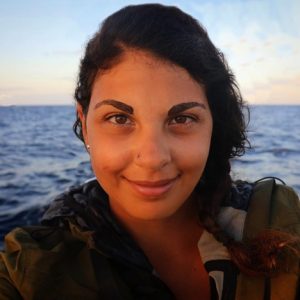
Author Erica Cirino is the Communications Manager of the Plastic Pollution Coalition. She has spent the last decade working as a science writer, author, and artist exploring the intersection of the human and nonhuman worlds. Cirino is best known for her widely published photojournalistic works that cut through plastic industry misinformation and injustice to deliver the often shocking and difficult truths about this most ubiquitous and insidious material.
This includes her recent book, Thicker Than Water: The Quest for Solutions to the Plastic Crisis (Island Press, 2021), in which she documents plastic across ecosystems and elements; shares stories from the primarily Black, Brown, Indigenous and rural communities that are disproportionately harmed by industrial pollution globally; and uncovers strategies that work to prevent plastic from causing further devastation to our planet and its inhabitants.

